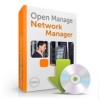Dell OpenManage Network Manager Web Client Guide 5.0 - Page 335
Actions and Adaptive CLI, Introducing Actions and Adaptive CLI
 |
View all Dell OpenManage Network Manager manuals
Add to My Manuals
Save this manual to your list of manuals |
Page 335 highlights
10 Actions and Adaptive CLI Introducing Actions and Adaptive CLI The Actions Manager lets you manage actions like enabling monitors, file backups, resyncs and so on. These actions are typically limited in scope, and not that complex. On the other hand, it also manages Adaptive CLI (command-line interface) commands to run against devices which can be complex. These commands amount to "mini-scripts" to query and configure those devices. In it, you can create commands to run against devices after the device driver has opened a connection to the devices. The driver handles logins, and general connection management. You can even initiate these actions with the application's optional group operations-although if you delete a target group, the operation will not work. Many drivers seed pre-configured command that appear listed when you first open this manager. For a brief overview of creating and using these, see How to: Create Adaptive CLI Example on page 365. Adaptive CLI's Attributes capabilities let you insert variables in scripts. See Attributes on page 344 for the details. You can also assemble configurations made here as component Tasks to execute with other component Tasks. You can even use this capability to include Perls scripts within OpenManage Network Manager. See Perl Scripts on page 363. Tip You can have Actions maintain lists like ACLs, and when these change, in the Adaptive CLI script, push the updated list out to the appropriate devices. Adaptive CLI commands let you map several vendor-specific commands to a single action, so you could, for example, query two types of devices throughout the network for their MAC addresses with a single action. Adaptive CLI actions can also help you debug more complex scripts that either query or configure devices. The Adaptive CLI manager displays a list of Configure and Show commands (the Command Type) with a Name, Description and the Last Run Date. You can filter what appears in this manager with the fields at its top. NOTE: The contents of the Action Portlet vary, depending on the various options you have installed. Introducing Actions and Adaptive CLI | Actions and Adaptive CLI 335















